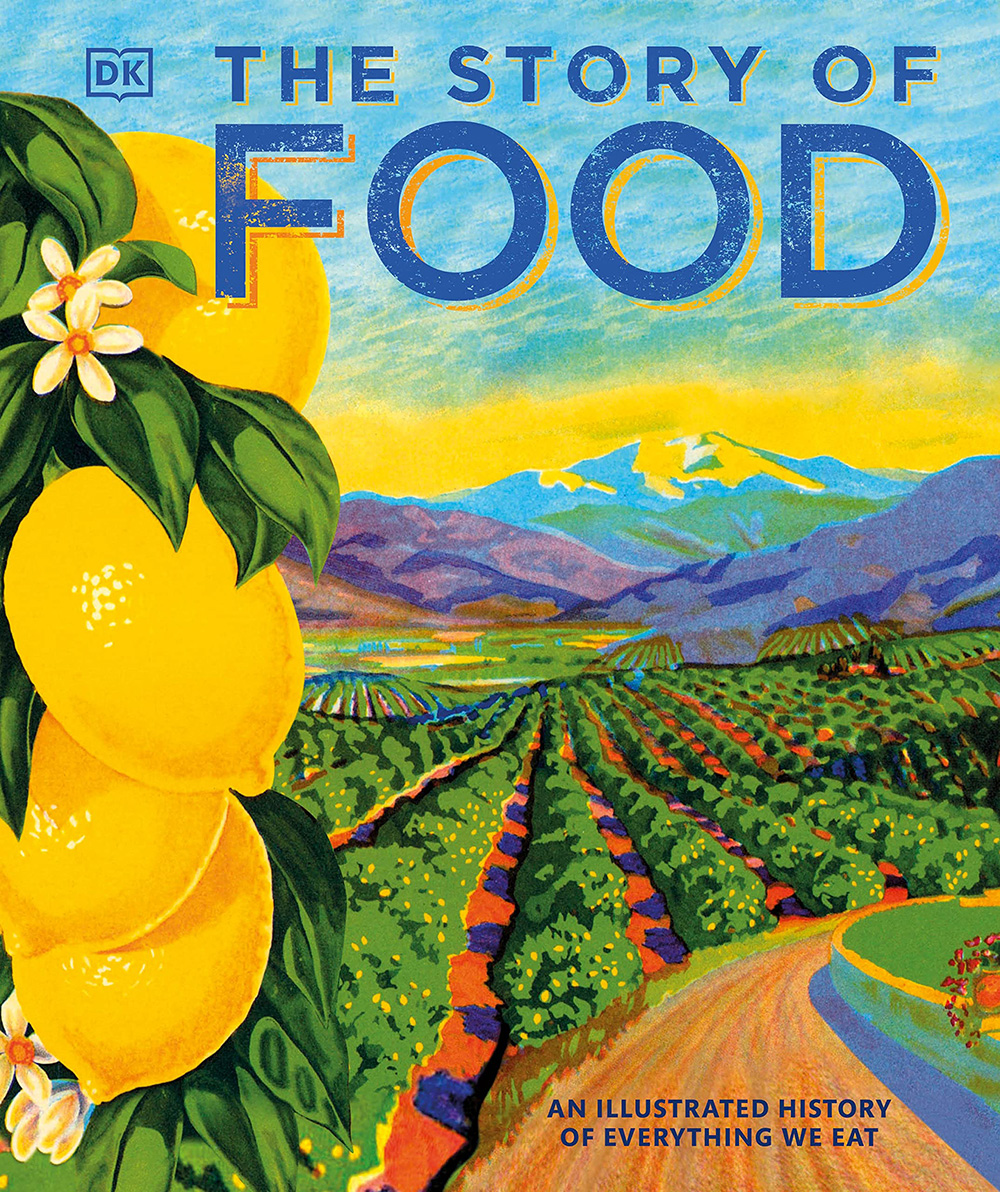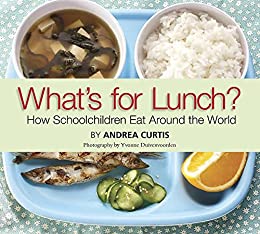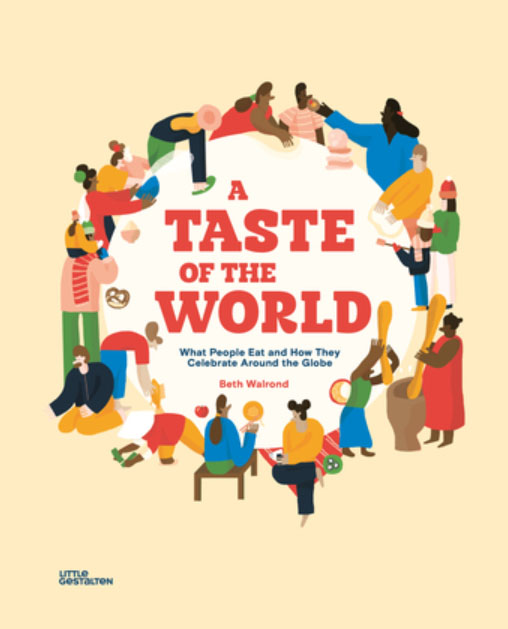Milestone Exploration for Volunteers
Geography & Culture
Cooking Video
Background Agricultural Connections
For much of human history, people were limited to the foods that could be produced in their region. Before we had refrigerators and freezers to preserve food and airplanes to transport food quickly around the world, people ate diets based on the plants and animals that could thrive locally. Food is an important part of culture. Traditional dishes are passed down from one generation to the next. For many families, cooking traditional food is a way to preserve their culture.
Suggested Book
Hungry Planet: What the World Eats by Peter Menzel and Faith D'Alusio
Hungry Planet profiles 30 families from around the world—including Bosnia, Chad, Egypt, Greenland, Japan, the United States, and France—and offers detailed descriptions of weekly food purchases; photographs of the families at home, at market, and in their communities; and a portrait of each family surrounded by a week's worth of groceries. This captivating chronicle offers a riveting look at what the world really eats.

Where in the World?
Background Agricultural Connections
Prior to the rise of agriculture, people were hunters and gatherers. After the domestication of plants and animals, people were able to cultivate their own food. Still, the only food available was what they grew or what they could catch; they couldn't just go to the grocery store and buy whatever was on the shelf. In 1942, when Christopher Columbus came to America, he saw plants and animals that he had never seen before. He took them back to Europe with him. Columbus's trips were the beginning of an exciting time in the history of food. People would be able to taste different foods; foods with flavors, shapes, and textures they had never experienced before!
The Columbian Exchange refers to the transfer of animals, plants, ideas, diseases, and more that occurred during the two centuries following Columbus's arrival in the Americas. Global trade and cultural exchanges significantly altered the lives of people around the world, starting with one of their most basic needs—food.
It is estimated that nearly two-thirds of the foods consumed today originated in the New World (the Americas). Prior to the Columbian Exchange, these foods were unknown to Europeans. Foods that originated in Europe, Africa, or Asia are Old World foods. For example, mountainous Central Asia is the center of origin of apples, making them an Old World food. Central Asia is where the first wild apples grew and where apples were first domesticated by people. Today the wild ancestors of domestic apples still grow in Central Asia, and this is where the greatest genetic diversity in apples can be found.
People all over the world are constantly producing, processing, manufacturing, and transporting food. People all over the world are eating, gardening, hunting, shopping for food, and preparing food to be eaten. Everyone must eat to survive, but people in different regions of the world eat very differently from each other. Consider how and why geographic location affects what people eat. What plants and animals live in the area? What kinds of transportation are available to the area? Can planes, ships, or trucks deliver food that was grown in another part of the world?
Consider the foods you've eaten this week. Where did they originally come from? Where are they grown today? What percentage of what you consumed came from the New World? Would people from other parts of the world eat the things you eat or reject them because they are new and look different?
Suggested Book
The Story of Food: An Illustrated History of Everything We Eat by DK
This glorious visual celebration of food in all its forms reveals the extraordinary cultural impact of the foods we eat, explores the early efforts of humans in their quest for sustenance, and tells the fascinating stories behind individual foods of all types, from nuts to grains, fruits and vegetables, and meat and fish, to herbs and spices, this fascinating culinary historical reference provides the facts on all aspects of each food's unique story.

Website
Food Timeline
Ever wonder how the ancient Romans fed their armies? What the pioneers cooked along the Oregon Trail? Who invented the potato chip…and why? So do we! Food history presents a fascinating buffet of popular lore and contradictory facts. Some experts say it's impossible to express this topic in exact timeline format. They are correct. Most foods are not invented; they evolve. We make food history fun.
Answer Key
Old World and New World Foods
Classify foods as Old World Foods or New World Foods using this answer key.
What's for Lunch?
Background Agricultural Connections
For some students, lunchtime is their favorite part of the school day. School lunches can look very different depending on where you live. Ingredients and food preparation vary among different cultures. How does your school lunch compare to the lunches of students in other countries?
Suggested Book
What's for Lunch?: How Schoolchildren Eat Around the World by Andrea Curtis
Every day, all over the world children eat together at school. Compare and contrast school lunch in different countries and cultures. Each page has a photograph of a typical lunch along with a detailed description about the menu and what school lunch is like.

Video
What School Lunch Looks Like Around the World
Lunch time at school can be one of the best parts of a kid's day. From aloo gosht in Pakistan to sausage rolls in Australia and smoky, tomato-y jollof rice in Nigeria, we're taking a look at what kids around the world eat for lunch.
Video
School Lunches Around the World
These lunches are cool enough for school. Take a look at what kids eat for school lunch in the United Kingdom, the United States, Cuba, Norway, Nigeria, France, Russia, Mexico, Japan, the Philippines, India, and Korea.
Food Supply Chain
Food Supply Chain Tutorial Video (Coming Soon)
This tutorial video will walk you through the Food Supply Chain activity.
Background Agricultural Connections
How does food get to the grocery store? The term supply chain is used to describe the sequence of processes involved in the production, processing, and distribution of a commodity. The chain begins with the equipment farmers (the producers) need to produce food, such as seeds, fertilizer, and machines. Farmers plant, maintain, and harvest crops or raise animals. The food is cleaned, processed, and packaged before being shipped to grocery stores and into the hands of consumers. Each step in the chain is part of agribusiness, a term used to describe the range of businesses related to producing, processing, and distributing agricultural products.
Transportation is a critical part of the supply chain. Some regions cannot produce certain foods due to population density, seasons, and climate and soil conditions. In the United States, food is shipped an average of 1,500 miles before being sold. The five main modes of transporting agricultural products are trucks, trains, airplanes, cargo ships, and barges. GPS, mobile scanners, and smart phones are used to track agricultural products from the producer to the consumer. This real-time data increases delivery efficiencies and food safety.
Suggested Book
Pickles to Pittsburgh by Judi Barrett
In Pickles to Pittsburgh, the sequel to Cloudy with a Chance of Meatballs, Kate drifts off to sleep and, with her brother Henry as her copilot, visits the land of Chewandswallow—a land characterized by massive amounts of food, immense carrots, leafy jungles of lettuce, and tuna fish sandwiches so gigantic they have to be moved by helicopter. And what the people of Chewandswallow are doing with all that food is most intriguing of all! Even though this book is fictional, consider how some of these modes of transportation are used in real life to get agricultural products from producers to consumers.

Videos
Discover how five different agricultural commodities are transported from producers to consumers.
Holiday Traditions
Background Agricultural Connections
People around the world have their own unique traditions, from daily household responsibilities and family holidays to religious and historical ethnic customs. Many of these traditions center around food and its preparation. Food is a central element of culture around the world. Does your family cook special meals for holidays?
Suggested Book
A Taste of the World: What People Eat and How They Celebrate Around the Globe by Little Gestalten
Festive feasts from around the world bring people together to celebrate and share stories. A Taste of the World travels across the globe uncovering different dishes, traditions, cultures, and festivals from Egypt to Germany, Hanami in Japan, Chinese New Year, and a good old roast dinner in the UK. A Taste of the World will give you an appetite to explore.

